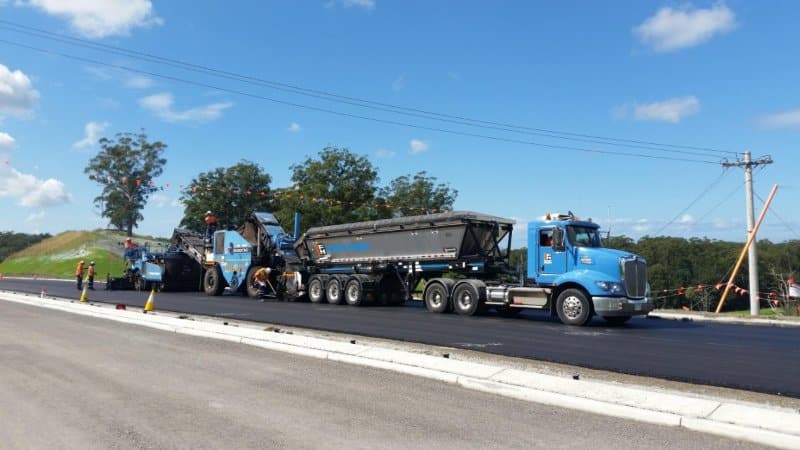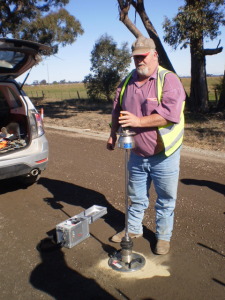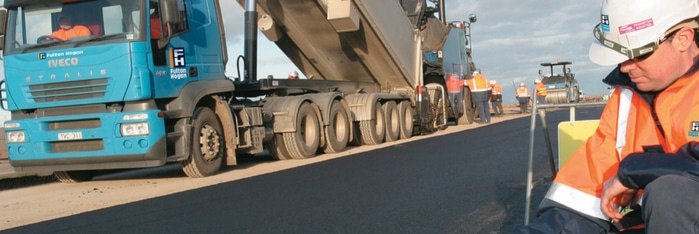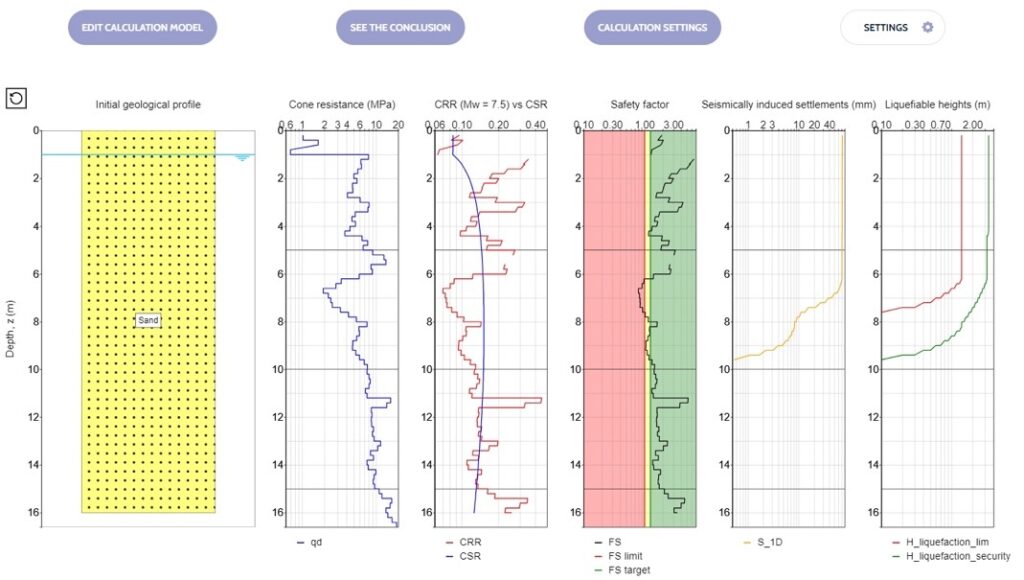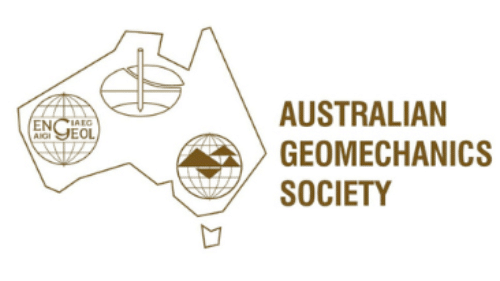How To Test For Compaction Of Gravel Bases Before Laying Asphalt On Top
One of the challenges our asphalting contractor clients and their consultants have been struggling with is how to test the gravel base before laying asphalt on top to make sure you have compaction.
They have been aware of the problem of non uniform compaction and soft spots but have not had a repeatable fast method of testing.
A case study is their work with councils on suburban streets. They are asked to mill off the top surface and then re-asphalt. Due to changes in the councils asphalt mix requirements, it’s harder to achieve the asphalt density specification (voids). Failure to meet specification can result in significant fines (e.g. $100K+) which can be more than the contractor will make as profit on the job.
Solving this problem has led them to the Light Weight Deflectometer (LWD), a portable device that provides immediate data on the level of compaction of the gravel base across the pavement. Now, they regard the Light Weight Deflectometer as insurance that the base is compacted properly before they lay the asphalt on top. Fast results are very important as roads are typically closed from e.g. 8pm to 4am and all works need to be completed within this limited time window.
Having this insight has enabled the contractor to have an articulate data based discussion with their client (in this case the council) if non uniformity and compaction below specification is discovered. There is potential for the contractor to perform rectification works, for example.
Armed with this new insight, the contractors are now engaging with Australian Asphalt Pavement Association (AAPA) as the organisation to bring the councils, road authorities and contractors together to work through the issues of responsibility for a poorly compacted base and how to resolve it.
Leading this industry change has been Fulton Hogan in Queensland. This fits well with their Right First Time strategy and drive to use innovative technology to solve practical problems.
FH is now routinely using the LWD with very good feedback and useful engineering data.
Laszlo Petho, Pavements Manager, Fulton Hogan
Having seen the insights the equipment brings immediately at the site, their peers are also now investing in the Light Weight Deflectometer so they can test the gravel base in a fast repeatable way to make sure they have compaction before laying asphalt on top.
The ZFG 3000 Light Weight Deflectometer (LWD) with GPS from Zorn Instruments is an easy to use instrument used to determine the stiffness of a granular base. Stiffness of a base is essentially a measure of a material’s ability to withstand deformation under load.
After scouring the market, we settled on the PANDA DCP test equipment as it offered the technical capability and, moreover, the flexibility required to work in the restricted environment our project presented; overhead clearance typically at 1500mm but as low as 1200mm. We had a unique problem that required a unique solution and that’s precisely what we found through the team at Insitutek and the PANDA equipment. The ease of assembly, intuitive operability and compact nature of the equipment, made light of the numerous soundings we required across a widely dispersed area.
FH is now routinely using the LWD with very good feedback and useful engineering data. The equipment is an easy to use Zorn LWD.
The Light Weight Deflectometer (LWD) was first used in 1998 by the Minnesota Department of Transportation (Mn/DOT) at the Minnesota Road Research Project. Starting in 2005 the LWD has been used by Mn/DOT as an acceptance tool for the compaction of roadbed and miscellaneous embankment and trench construction, culvert treatments and other tapered construction.
Insitutek Blogs
We find clients are often looking for ways to improve geotechnical testing outcomes and do it more efficiently at the same time. This drives their buying decision making. Australian Soil and Concrete Testing (ASCT) was a case in point when they were searching for Plate Load Test equipment for their upcoming Collector Wind Farm project. Some of the things that motivated them include: […]
We are excited to introduce the addition of a new Liquefaction Risk Estimation module in WebSprint©. Paired with our cutting-edge products, PANDA® and GRIZZLY®, this module enables you to assess the liquefaction risk of soils exposed to seismic stress. PANDA® Instrumented DCP: This cutting-edge tool provides dynamic penetrometer soundings, delivering precise data crucial for seismic risk evaluations. GRIZZLY® […]
The Australian Geomechanics Society is gearing up for a series of geotechnical events across VIC, WA, NSW, and SA-NT. We are thrilled to inform you that we will be sponsoring and attending these exciting geotechnical events, and we would love for you to join us. It’s a fantastic opportunity to catch up, explore our booth (VIC), and stay informed about […]

